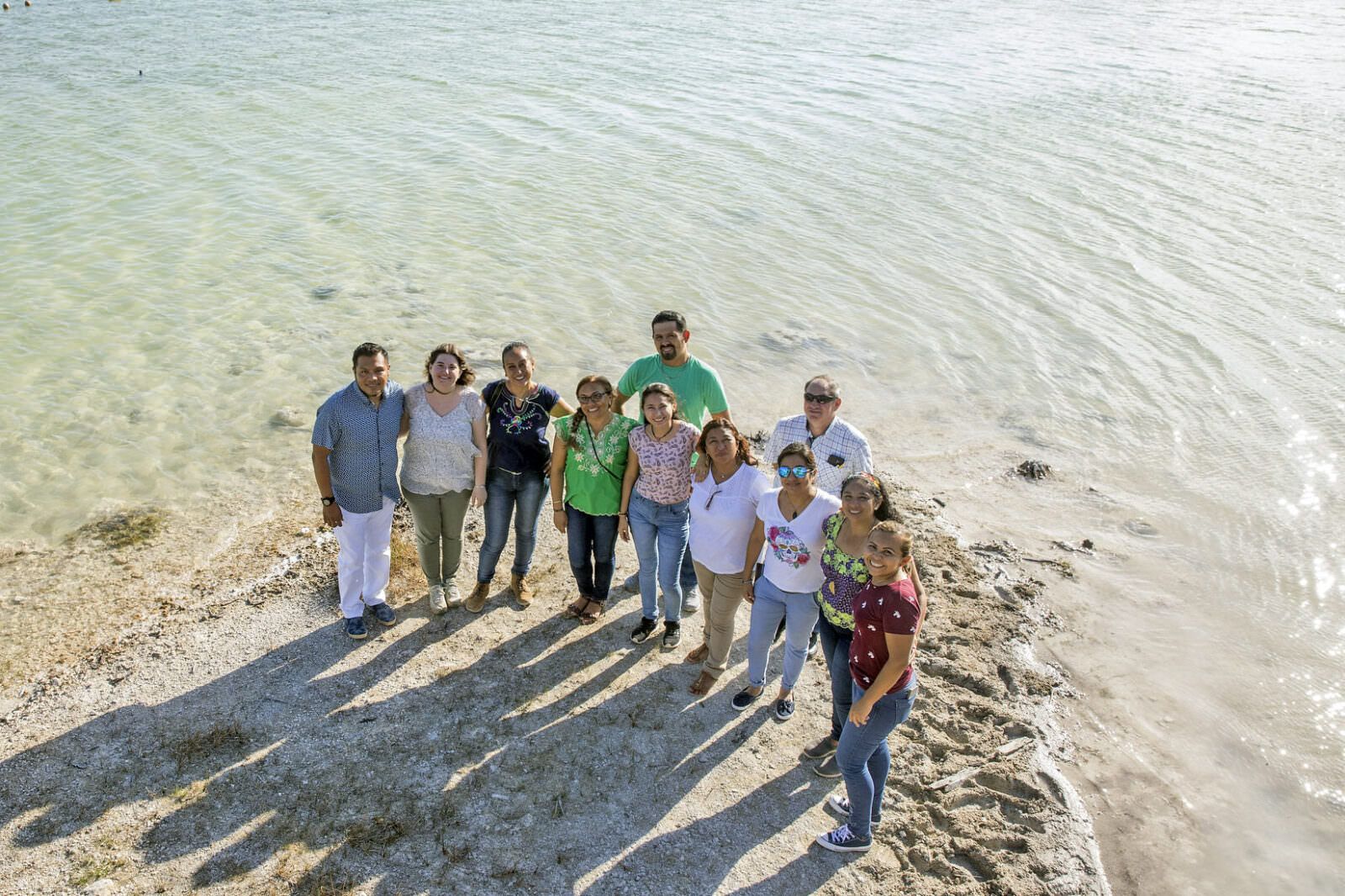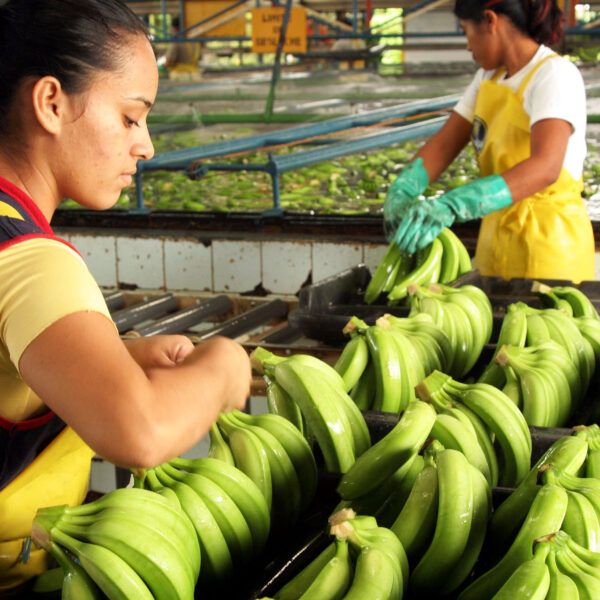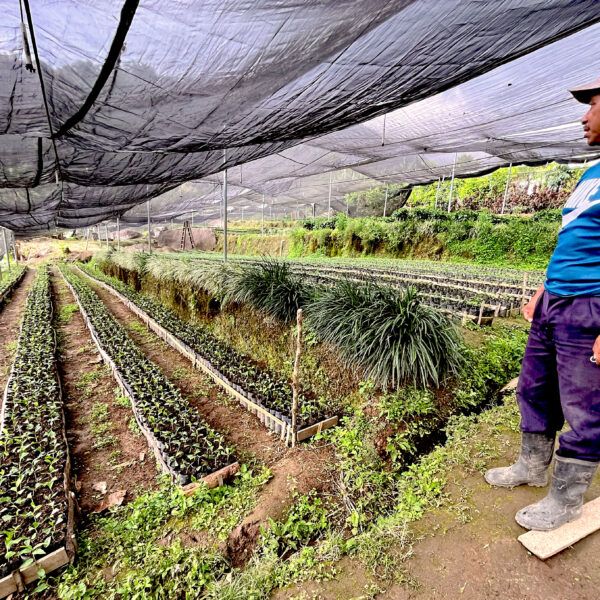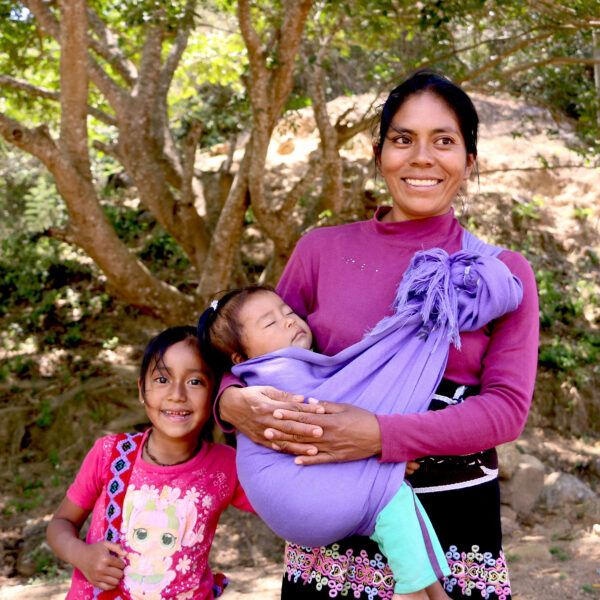It’s little wonder that 4.5 million tourists visit the Mexican state of Quintana Roo each year: Not only does it offer the sparkling seas and white-sand beaches known as the Riviera Maya, it is home to megadiverse tropical rainforest, replete with iconic wildlife, ancient trees, and Maya ruins.
Given that tourism is the state’s major industry—and that the majority of the young people here will someday work in tourism—it makes sense to teach local students how ecologically precious their home state is, and how ecotourism can be an effective way to conserve it. That’s why the Rainforest Alliance has been working for two years with teachers and students to strengthen sustainable tourism education here on the Riviera Maya.
As part of this ongoing work, supported by the TUI Care Foundation, the Rainforest Alliance recently held workshops with 35 teachers from all over the state to share educational tools and enable information-sharing between teachers. The workshops, held in Playa del Carmen and Felipe Carrillo Puerto, included a visit to two community tourism projects, where teachers observed and evaluated the strengths and challenges of these distinct ecotourism businesses—all so they could better teach their own students about sustainable tourism as a strategy for conservation.
Sustainable tourism in the Riviera Maya
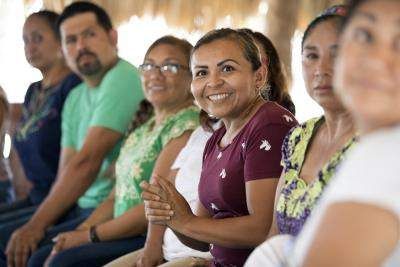
Teacher Mabel Quinto Castillo, of Comunidad de Limones, says that the workshops have completely changed her perspective on how tourism can improve sustainability—and how important it is that her students understand that, too. “I have always been careful with the environment, but what I’ve learned with the Rainforest Alliance has been really powerful. I try to apply as much as I can of what I’ve learned to raise awareness among my students.” She’s pleased with how quickly her students have taken to these lessons, even if their newfound passion can sometimes be a distraction. “I have one student, who, always raises his hand to ask something in the middle of the class, and I assume his question is about my lesson, but he comes out with ‘we have to water the seedlings!’” Quinto laughs, and adds, “I love that my students have grown to love nature, and that they understand the relationship between tourism and conservation.”
The workshop was one in a series of 6 which brings together a core group of 75 teachers, who then share the materials and tools with more than 300 other teachers, eventually reaching a total of more than 6,000 students. Participating teachers come from all over the state and from all kinds of communities—rural, urban, forest communities, and more—which makes it important that the lessons and materials developed are adaptable. Workshop teachers co-design lessons, tools, and materials, engaging in lively discussions and brainstorming. An important goal of the initiative is to create a network of teachers who can support and consult each other throughout the year.
Conservation through a network of teachers
Rainforest Alliance Education Manager Maria Ghiso says that creating a network of teachers is part of an effective strategy for developing sustainable tourism education on the Maya Riviera. “One of the most exciting things has been seeing the teachers share their knowledge and tools with each other. I love seeing my phone buzz with WhatsApp messages between teachers sharing photos and stories, asking each other questions and sharing resources for meetings, seminars, and local activities. We have really created a space for rich peer-to-peer learning, which is even more exciting because of the diversity of perspectives—teachers from north and south, rural and urban, and who teach different subject matter. They are all so passionate about teaching their kids about sustainability and ecotourism.”
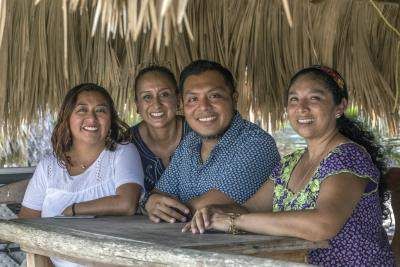
One teacher, Aracely Sandy, in Puerto Morelos, used the Rainforest Alliance tools to innovate a series of hands-on activities that strengthened students’ relationship to the land. The students planted a vegetable garden behind the school and built a bicycle-driven pump to pull water from a well to nourish their plants—learning about both biodiversity and physics in the process. Other teachers have taken advantage of multi-dimensional project the Rainforest Alliance created, in which students to make maps of their community, then interview a local elder to find out what the land was like years ago; they then compare satellite maps to see how land use has changed.
Quinto says her students’ favorite activities are “tree-planting, making posters about the environment, and debating sustainable tourism issues.” She adds that teaching her students about sustainable tourism isn’t just good for the Earth, but for the young people’s future, too. “The teachers’ network has given me so many activities to get the kids thinking about sustainable tourism as a potential way to make a living—it’s a way to direct them to a better world.”
